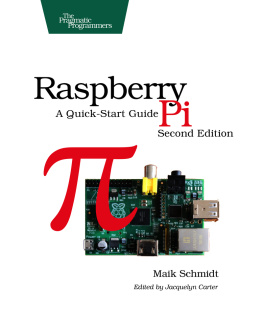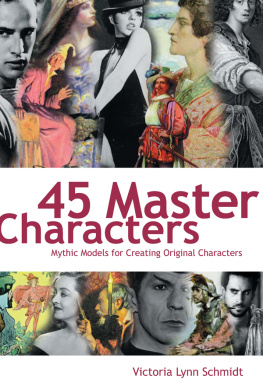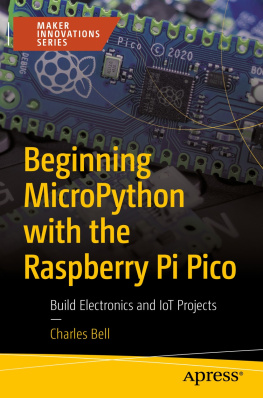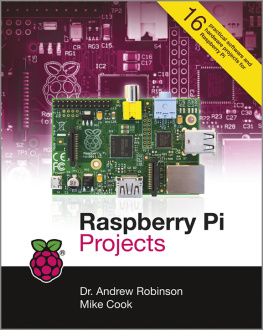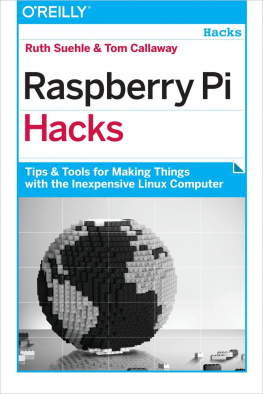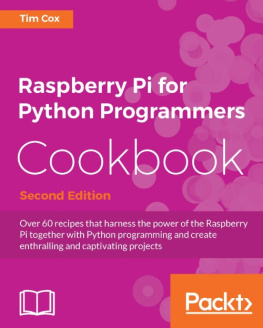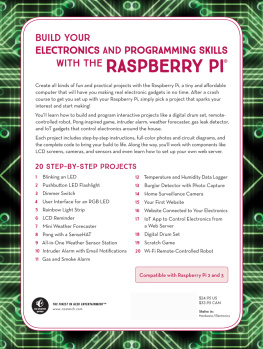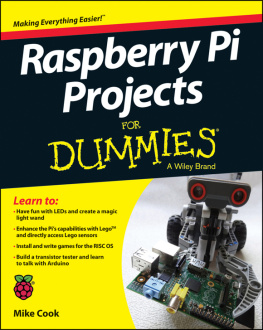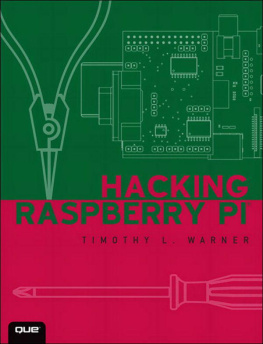Schmidt - Raspberry Pi: A Quick-Start Guide
Here you can read online Schmidt - Raspberry Pi: A Quick-Start Guide full text of the book (entire story) in english for free. Download pdf and epub, get meaning, cover and reviews about this ebook. City: Dallas;Texas, year: 2014, publisher: Pragmatic Bookshelf, genre: Home and family. Description of the work, (preface) as well as reviews are available. Best literature library LitArk.com created for fans of good reading and offers a wide selection of genres:
Romance novel
Science fiction
Adventure
Detective
Science
History
Home and family
Prose
Art
Politics
Computer
Non-fiction
Religion
Business
Children
Humor
Choose a favorite category and find really read worthwhile books. Enjoy immersion in the world of imagination, feel the emotions of the characters or learn something new for yourself, make an fascinating discovery.
- Book:Raspberry Pi: A Quick-Start Guide
- Author:
- Publisher:Pragmatic Bookshelf
- Genre:
- Year:2014
- City:Dallas;Texas
- Rating:5 / 5
- Favourites:Add to favourites
- Your mark:
Raspberry Pi: A Quick-Start Guide: summary, description and annotation
We offer to read an annotation, description, summary or preface (depends on what the author of the book "Raspberry Pi: A Quick-Start Guide" wrote himself). If you haven't found the necessary information about the book — write in the comments, we will try to find it.
Printed in full color.
Most of the book is targeted at beginners in computing and programming. A few parts, such as the small electronics project and setting up a web server, assume some intermediate skills.
The Raspberry Pi is one of the most successful open source hardware projects ever. For less than $40, you get a full-blown PC, a multimedia center, and a web server--and this book gives you everything you need to get started. Youll learn the basics, progress to controlling the Pi, and then build your own electronics projects. This new edition is revised and updated with two new chapters on adding digital and analog sensors, and creating videos and a burglar alarm with the Pi camera.
Get your Raspberry Pi up and running and doing cool stuff. Youll start with the basics: adding hardware, installing and configuring Debian Linux, and customizing the Pis firmware to get the most out of your hardware.
Then the fun begins. Youll connect the Pi to your home network, surf the web, and tweet messages. Youll learn how to get the most out of Midori, the Pis standard browser, and control the desktops of other PCs with the Pi. Then youll explore the Pis versatility with a series of home projects. Turn it into a web server in your home network; convert the Pi into a powerful multimedia center so you can watch high-definition video and listen to your favorite music; and play classic video games.
Then youll use the GPIO pins on the Raspberry Pi to build your own electronics projects, such as an out of memory alarm. Youll learn how to use digital and analog sensors with the Pi, even though the Pi doesnt have analog input ports! Finally, youll set up the Pi camera, create your own time-lapse videos, and build an automatic e-mailing burglar alarm. Power to the Pi!
What You Need
You need a Raspberry Pi and several things that you probably already have at home, such as a keyboard, a mouse, a monitor/TV set, and an SD card. To build the electronic projects you need a few cheap parts and the Pi camera. **
Formats : EPUB
Schmidt: author's other books
Who wrote Raspberry Pi: A Quick-Start Guide? Find out the surname, the name of the author of the book and a list of all author's works by series.

